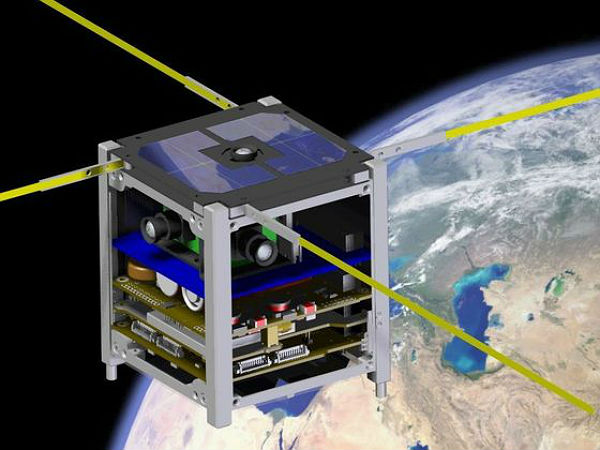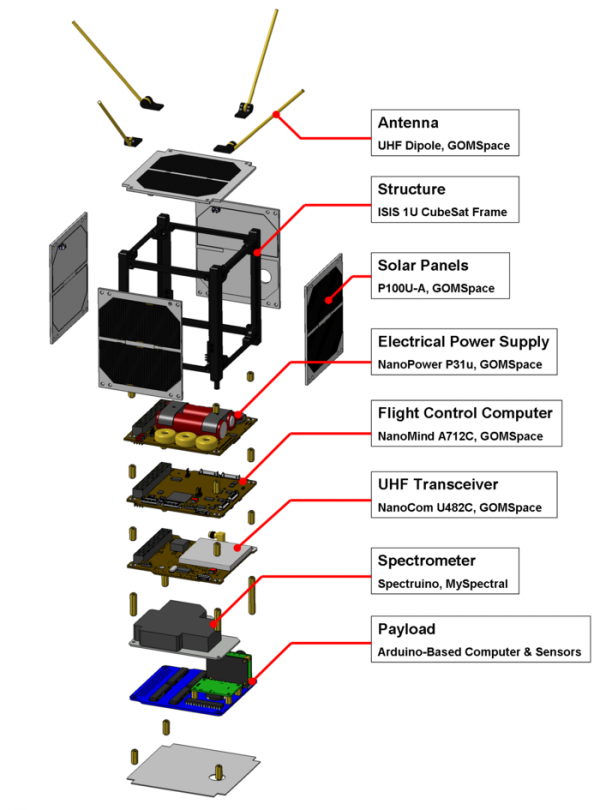ArduSat – first crowdsourced science mission in space

A small team of scientists and engineers is trying a new approach to space science — a model that takes its cues, and its funding, largely from private individuals. They propose to put a 1-kg satellite called ArduSat into space, and to make its sensors available to anyone who made a minimum contribution to the project. If the project is successful, it will be the first crowdsourced science mission in space. The technology itself is not the point — it’s getting space research into new hands.
The startup company behind the effort is NanoSatisfi, based at NASA’s Ames Research Center in California – though NASA has no formal ties to the project.

NanoSatisfi was founded by Austrian-born Peter Platzer a former high-energy physicist (CERN), former Hedge Fund Quantitative Trader, avid HP-41 hacker and Arduino enthusiast, along with Belgian aerospace engineer Jeroen Cappaert intern at NASA Ames Research Center, Canadian aerospace engineer Joel Spark intern at EADS Astrium and Hungarian Reka Kovacs intern at NASA Ames Research Center working on alternative methods of public outreach for space science. The four founders met at the International Space University in Strasbourg and thought that they could do something to provide affordable, open-source space exploration for everyone.
Projects suggested so far include measuring ozone levels, observing weather, watching for meteors, and taking spectra of bright stars and planets. All that equipment is relatively low-tech. NanoSatisfi will test custom experiments using prototypes in the lab and launched on a high-altitude balloon and a suborbital rocket.
NanoSatisfi has to build a satellite that will survive not only the rough trip to space, but also the harsh environment it will find once it gets there. The tiny package doesn’t allow room for backup components, so both the hardware and the proposed experiments have to be tested exhaustively. If all goes well, the team hopes to have ArduSat in orbit in about a year. If successful, ArduSat may open the doors to further crowdsourced missions, bringing space science into yet more hands — possibly even yours.




ArduSat is based on the 13-year-old CubeSat design, dozens of which are already in orbit taking measurements for governments and universities. Last year, six CubeSats rode made the trip to space with NASA’s environmental-observation NPP satellite, and seven more made the trip on an ESA rocket last March. How ArduSat will make it into space has yet to be determined, but Cappaert says his group is in talks with several potential launch partners around the world, including governments and commercial ventures.
ISIS CubeSat Structure Brochure
ArduSat Ardino CubeSat Technical Details
ArduSat Open Source CubeSat Next Phase in DIY Space Access
ArduSat Arduino CubeSat Update
Source: Space Safety Magazine, SkyAndTelescope, Kickstarter, SpaceFellowship
Featured image: An artist’s impression of the ArduSat in orbit (Credit: NanoSatisfi)

Commenting rules and guidelines
We value the thoughts and opinions of our readers and welcome healthy discussions on our website. In order to maintain a respectful and positive community, we ask that all commenters follow these rules:
We reserve the right to remove any comments that violate these rules. By commenting on our website, you agree to abide by these guidelines. Thank you for helping to create a positive and welcoming environment for all.